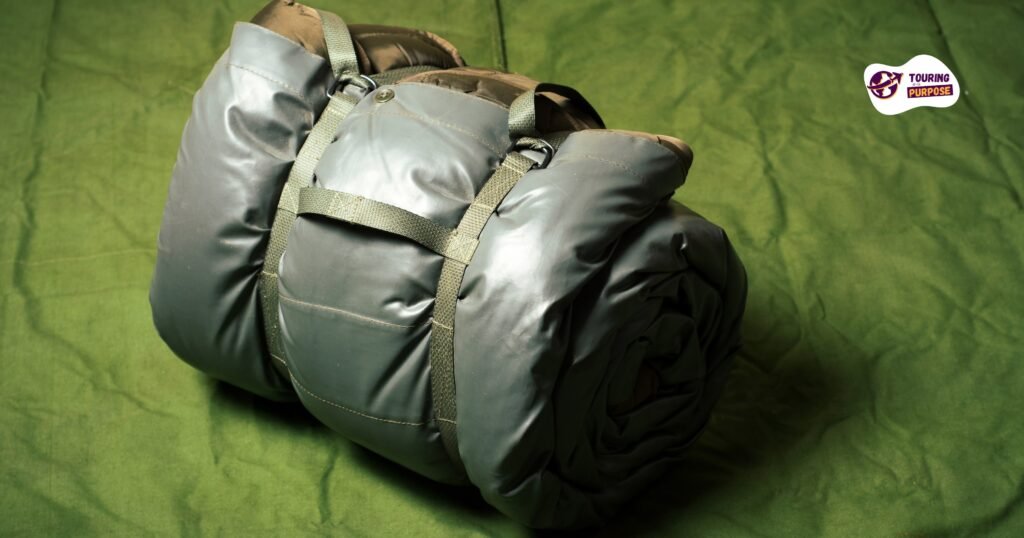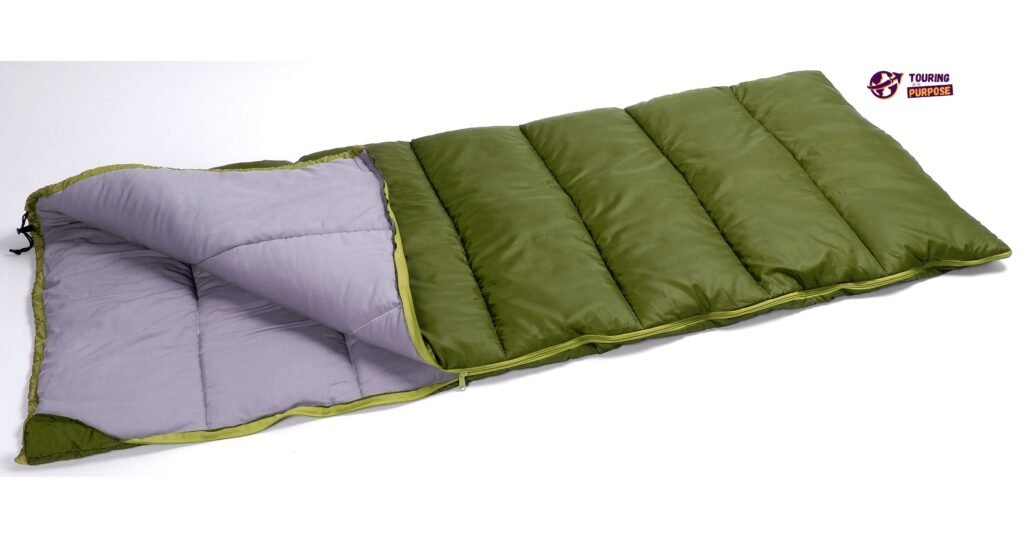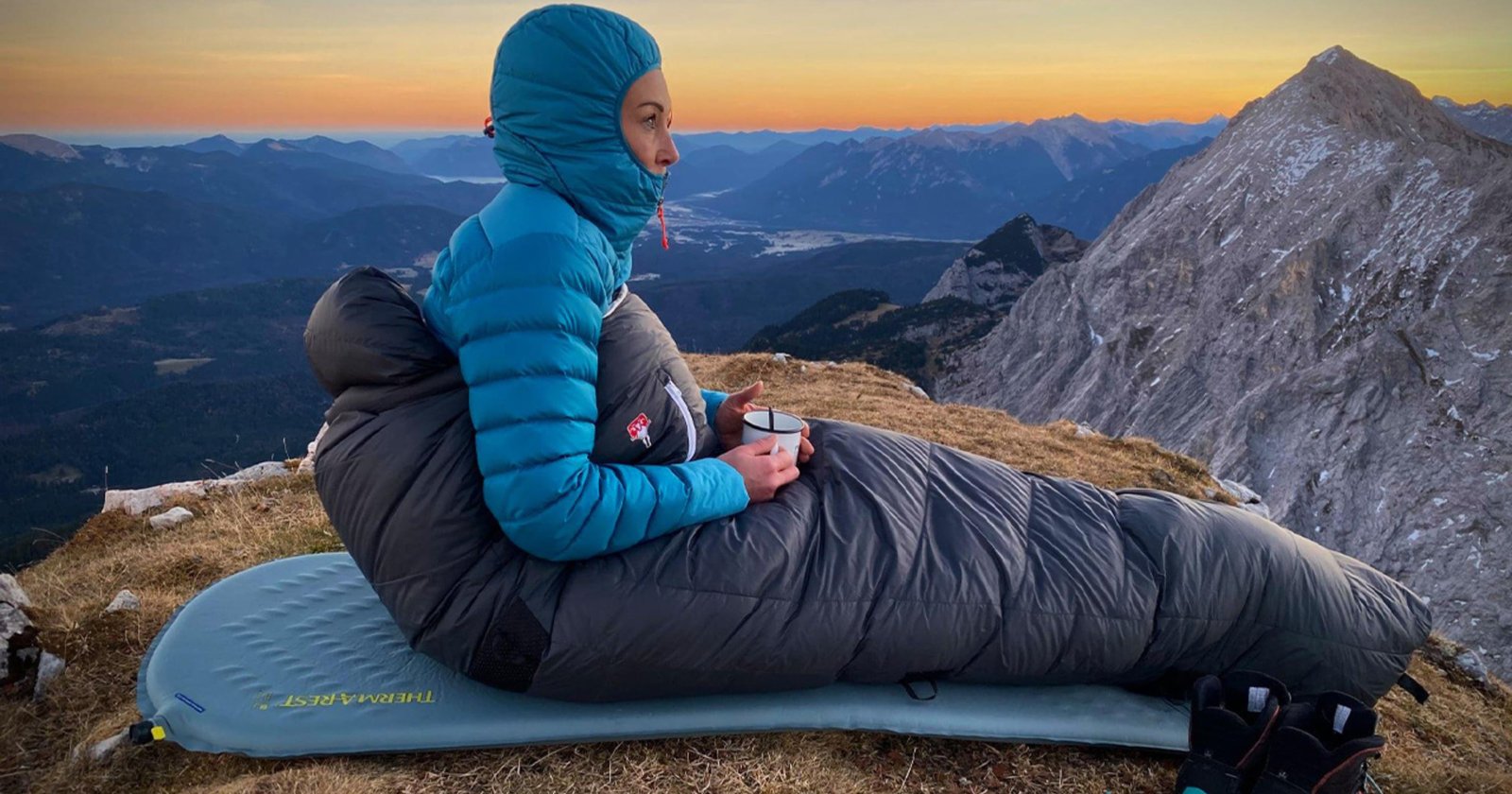Commonly utilized materials include nylon, polyester, and taffeta. While silk is occasionally employed in certain bags, it comes at a higher cost and is more prone to tearing, yet it boasts exceptional softness, breathability, and heat dispersion. Brushed cotton, flannel, or fleece are also options, mainly found in recreational bags better suited for car camping.
Sleeping bags are typically made of two key components: the shell and the insulation. The shell, or outer layer, is usually made from durable sleeping bags made of water-resistant materials like ripstop nylon or polyester to protect against outdoor elements. Inside the shell is the insulation, which retains heat and keeps the sleeper warm. There are two common types of insulation: down and synthetic. Down insulation, made from the fluffy undercoating of ducks or geese, is incredibly warm and lightweight but less effective when wet.
Synthetic insulation, made from polyester fibres, makes sleeping bags heavier and less compact but maintains its insulating properties even when damp, making it a popular choice for wet conditions. The design and materials can vary based on the intended use of the sleeping bag, with specialised models for different seasons, climates, and activities.
Introduction to Sleeping Bags
Sleeping bags are an essential piece of outdoor gear designed to provide comfort and warmth for a good night’s sleep in a variety of environments.
A well-chosen sleeping bag can be the difference between a refreshing night’s sleep and a cold, miserable experience.
Understanding the different components and materials used in their construction can help outdoor enthusiasts choose the right sleeping bag for their needs, whether they’re camping in the heat of summer, what sleeping bags are made of the chill of winter, or the dampness of the rainy season.
In the following sections, we will delve deeper into the world of sleeping bags, exploring their features, benefits, and how they have evolved to meet the diverse needs of outdoor adventurers.

Outer Shell Material
- Ripstop Nylon: Discuss the advantages of ripstop nylon; what are sleeping bags made of, known for their durability and resistance to tearing?
- Polyester: Explore how polyester offers a good balance between cost, durability, and water resistance.
- Gore-Tex and Other Waterproof Fabrics: Explain the use of waterproof fabrics like Gore-Tex in premium sleeping bags, ideal for wet conditions.
- Canvas: Mention canvas as a durable but heavier option suitable for certain camping scenarios.
Insulation Types
- Down Insulation: Describe the exceptional warmth and compressibility of down insulation, often found in high-end sleeping bags.
- Synthetic Insulation: Explain how synthetic insulation is a cost-effective and water-resistant alternative, making it suitable for a wide range of conditions.
- Hybrid Insulation: Discuss hybrid sleeping bags that combine down and synthetic insulation for the best of both worlds.
- Wool Insulation: Mention wool insulation as a natural and warm option, albeit less common in modern sleeping bags.

Inner Lining Material
- Cotton: Explain how the cotton lining is comfortable but not commonly used due to its heavy weight and moisture-absorbing properties.
- Flannel: Highlight flannel as a cosy lining material used in some sleeping bags.
- Taffeta: Discuss the benefits of taffeta lining, which is lightweight and moisture-wicking.
- Brushed Polyester: Mention brushed polyester as a soft and breathable option often found in high-quality sleeping bags.
Temperature Ratings and Fill Power
- Temperature Ratings: Explain how temperature ratings on sleeping bags help users select the right bag for specific weather conditions.
- Fill Power: Discuss the concept of fill power in down insulation, indicating its loftiness and warmth.
- EN (European Norm) Ratings: Mention the standardised EN ratings for sleeping bags in Europe, which provide a more accurate understanding of their temperature performance.
Shell Construction
- Baffles: Describe the baffle construction that prevents insulation from shifting and creating cold spots.
- Continuous Filament: Explain how continuous filament technology minimises cold spots and enhances the durability of the sleeping bag.
- Quilting: Discuss quilting as a traditional construction method often used in less expensive sleeping bags.

Features and Accessories
- Zippers: Highlight the importance of quality zippers in sleeping bags, including full-length zippers and double zippers for ventilation.
- Hoods and Collars: Discuss the inclusion of hoods and collars for added warmth and comfort.
- Pockets and Compartments: Explain how some sleeping bags what are sleeping bags made of come with internal pockets for storage.
- Compression Sacks: Mention compression sacks for conveniently packing and carrying your sleeping bag.
Choosing the Right Sleeping Bag
- Sleeping Bag Shapes: Discuss the differences between mummy bags, rectangular bags, and semi-rectangular bags.
- Intended Use: Explain how the intended use, whether camping, backpacking, or mountaineering, influences your choice.
- Insulation and Temperature Rating: Emphasize the importance of selecting the right insulation type and temperature rating for your needs.
- Weight and Packability: Discuss the significance of weight and packability, especially for backpackers.
Caring for Your Sleeping Bag
- Cleaning and Storage: Provide guidelines for cleaning and storing your sleeping bag to maintain its performance and longevity.
- Repair and Maintenance: Explain how to address minor repairs and maintain the overall condition of your sleeping bag.
Conclusion
Recap Key Takeaways: Summarize the key points, from the materials used in sleeping bags to the features that make them versatile. Empowerment: Conclude by empowering outdoor enthusiasts to make informed choices when selecting a sleeping bag; what are sleeping bags made of to ensure a comfortable and restful night’s sleep in various outdoor settings? The materials and components used in the construction of sleeping bags are integral to their performance and suitability for specific conditions. Armed with the knowledge of what sleeping bags are made of, you can make well-informed decisions to enhance your outdoor comfort and experience.
FAQs
Is polyester or cotton better for sleeping bags?
In the debate between polyester and cotton for sleeping bags, both have unique benefits. Polyester is favoured for its durability, quick-drying properties, what sleeping bags are made of, and resistance to mould and mildew, making it ideal for damp and challenging outdoor conditions. On the other hand, cotton provides superior comfort and breathability but might not be the best choice for wet environments due to its slower drying time.
What is the outside of a sleeping bag made of?
The outer shell of a sleeping bag is typically made of durable materials like nylon or polyester. These materials are chosen for their strength and water-resistant properties, which are essential in protecting the insulation layer from moisture. Some high-end sleeping bags may also feature a water-resistant down or a synthetic fill to enhance warmth and comfort.
Is polyester good for a sleeping bag?
Yes, polyester is excellent for a sleeping bag due to its unique attributes. It’s durable, lightweight, and dries quickly, which can be vital for camping in damp environments. Additionally, Polyester is easy to clean and resistant to mould and mildew, thus enhancing the sleeping bag’s lifespan. However, it might lack the breathability and comfort provided by natural fibres like cotton.
What are the 5 types of sleeping bags?
The five types of sleeping bags are rectangular, barrel-shaped, mummy, double bags, and sleeping pods for kids. Rectangular bags offer ample space, what are sleeping bags made of, while barrel-shaped ones balance space and warmth. Mummy bags are light and heat-efficient, double bags accommodate two people, and sleeping pods are designed for children, prioritising safety and comfort.































